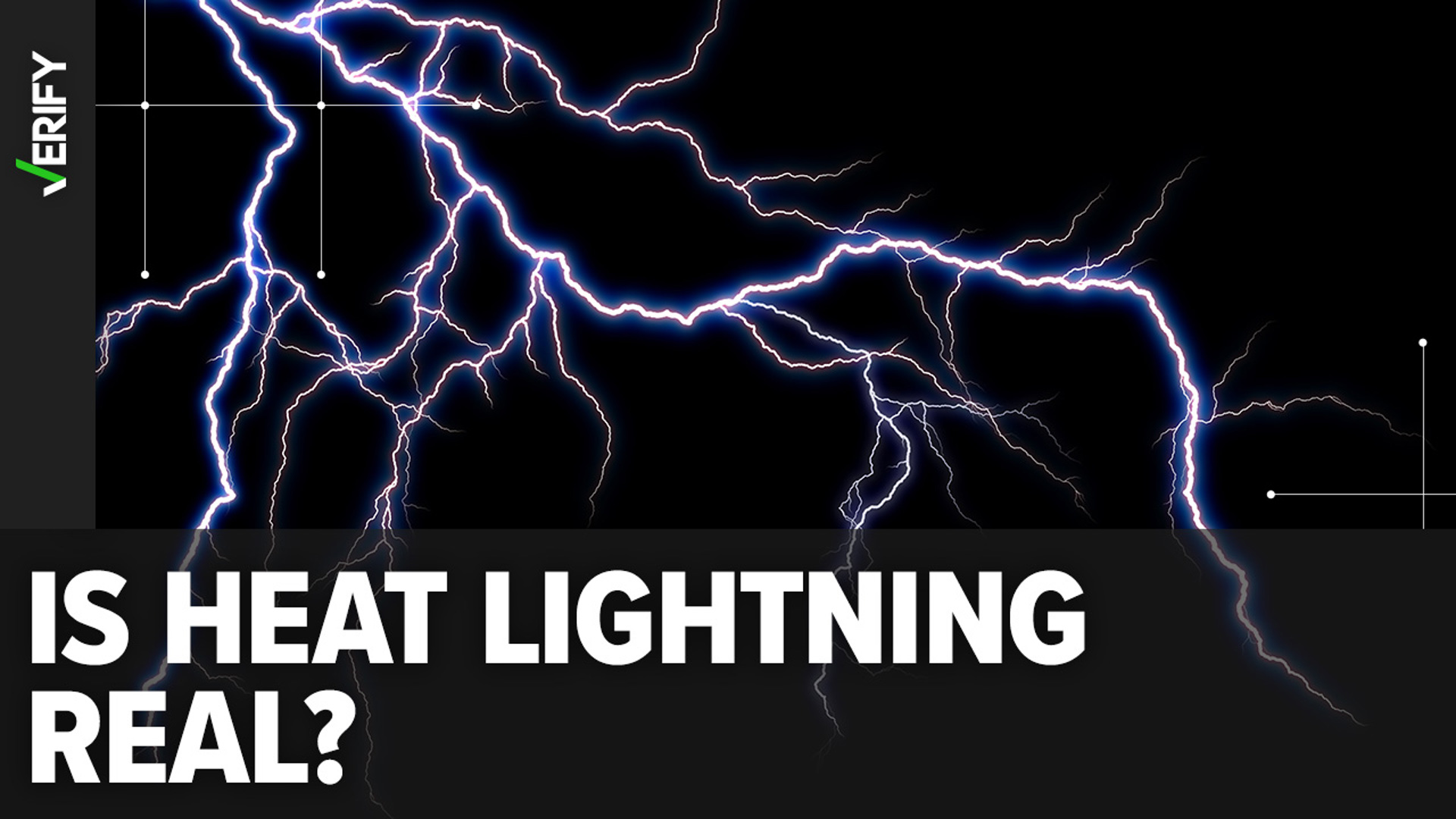In many places, “heat lightning” is common during the hot, humid months of July and August. Heat lightning, according to some, is a flash of cloud lightning that isn’t accompanied by thunder and is caused by the heat.
A social media post with over 12,000 likes claims that heat lightning doesn’t actually exist.
THE QUESTION
Is heat lightning real?
THE SOURCES
THE ANSWER
No, heat lightning is not real.
WHAT WE FOUND
There is no such thing as soundless lightning caused by hot, humid temperatures.
The soundless flash of light people often call “heat lightning” is actually caused by regular lightning produced by thunderstorms. The lightning is just too far away to be seen or heard, the University of Illinois at Urbana-Champaign Extension says.
The faint flash isn’t the lightning itself; it’s light from the strike being reflected off of higher-level clouds, the National Weather Service (NWS) says.
The bolt or flash of lightning might be obscured by mountains, hills or trees, the NWS says. And if the lightning is far enough away, then the curvature of the Earth might hide the lightning beyond the horizon.
Thunder can only be heard for about 10 miles from a flash of lightning, according to the NWS. So if the lightning is far enough away to be hidden by the horizon, you’re not going to hear any thunder from it.
Sometimes it’s possible to still not hear any thunder even if the lightning is closer. That’s because bodies of air with different densities can bend sound waves so that they might not ever reach the ears of an observer, according to the Farmers’ Almanac.
The Midwestern Regional Climate Center says heat lightning may be visible from flashes 100 miles or more in the distance.
That kind of distance can be made possible by hazy skies because the flash of light from lightning will reflect off of the layer of haze, the Farmers’ Almanac says.

